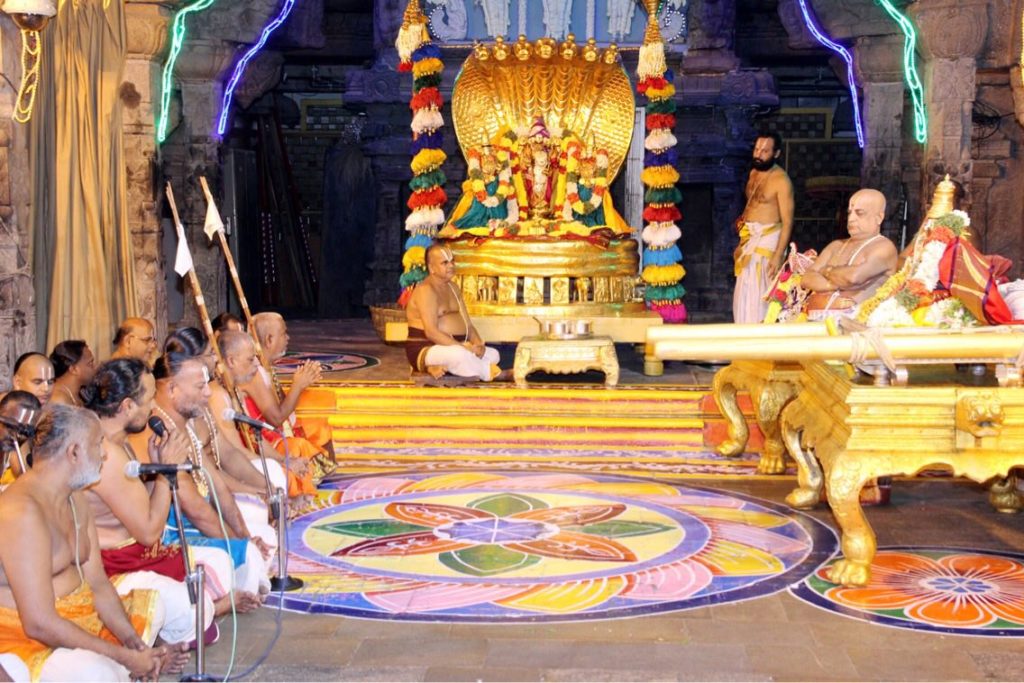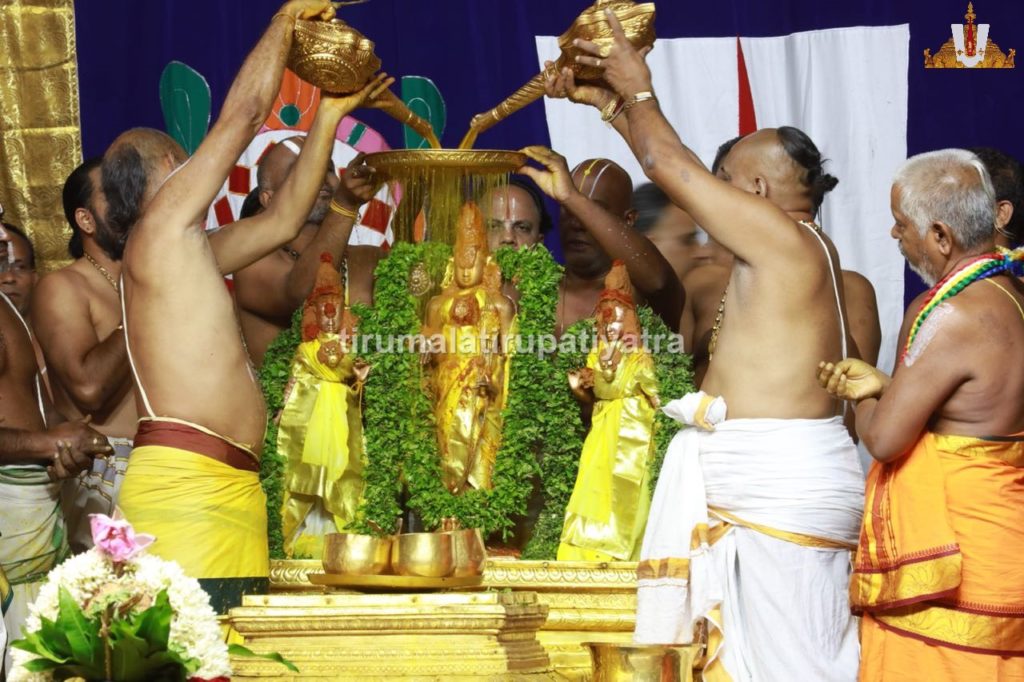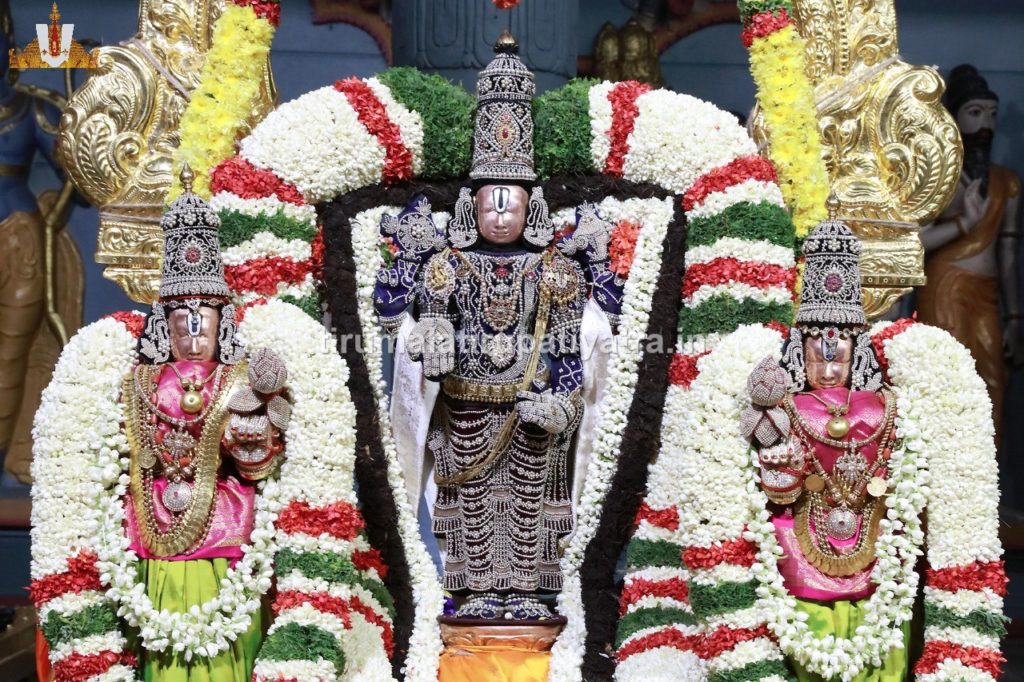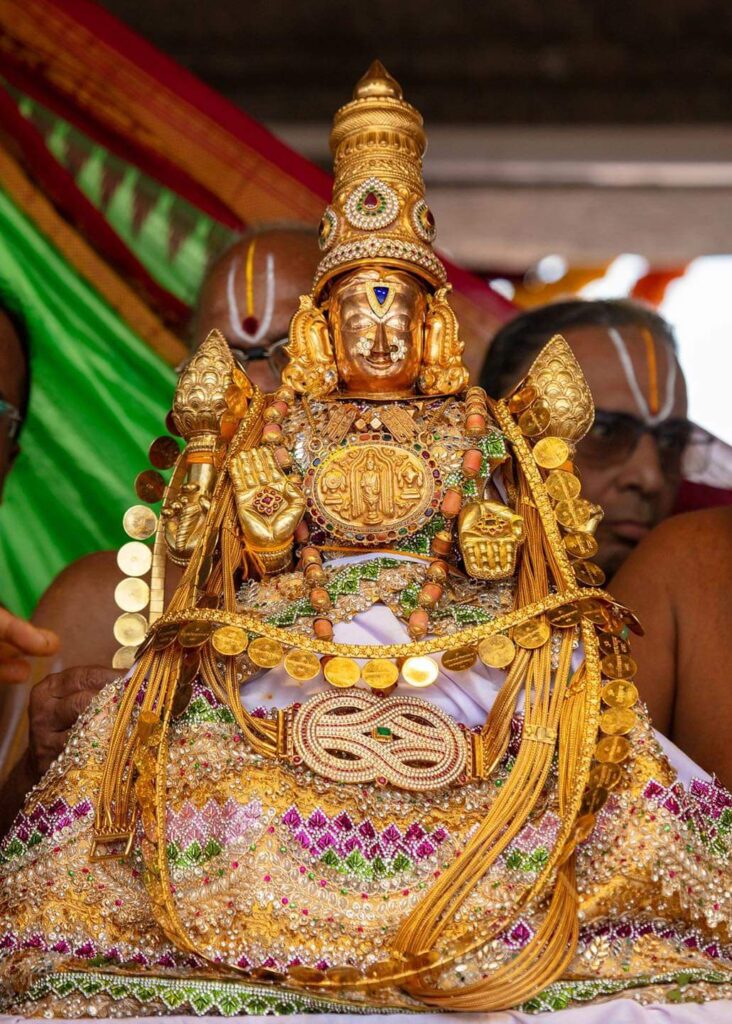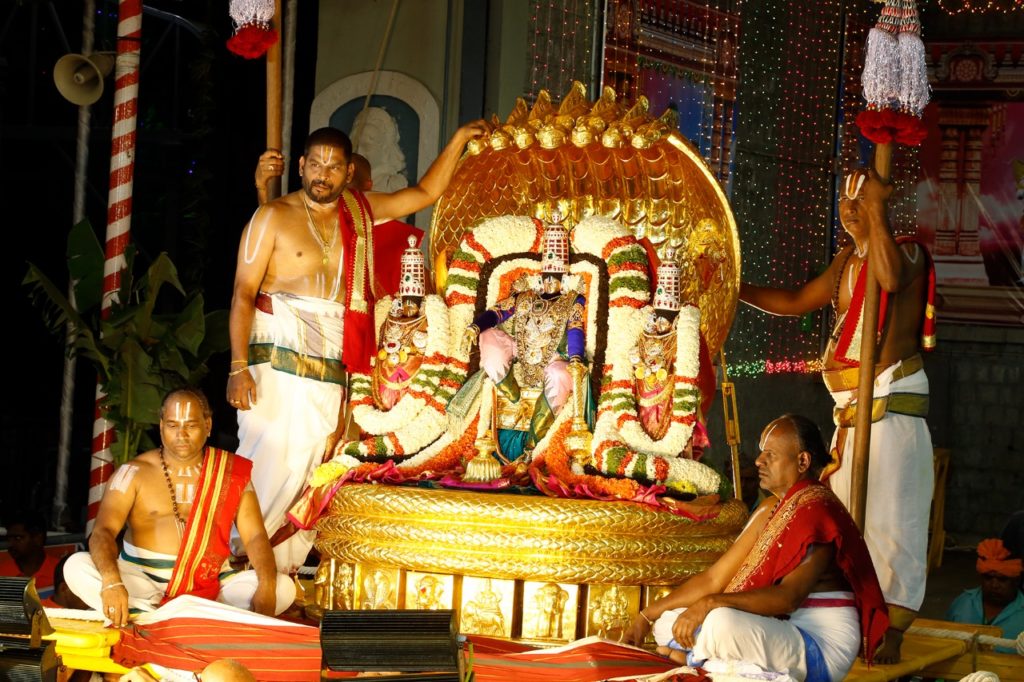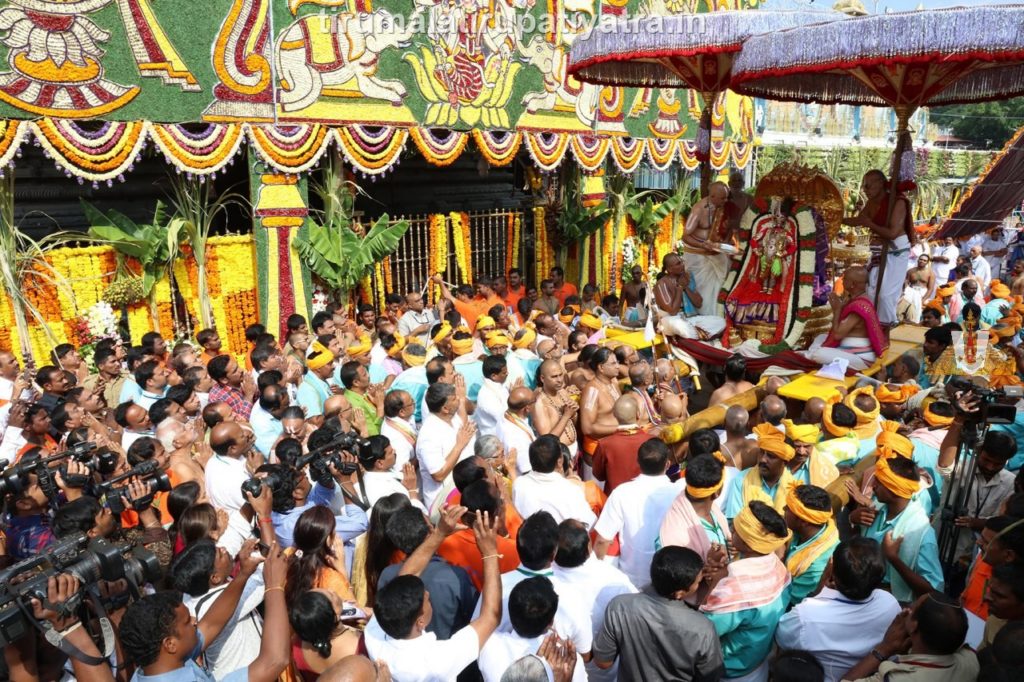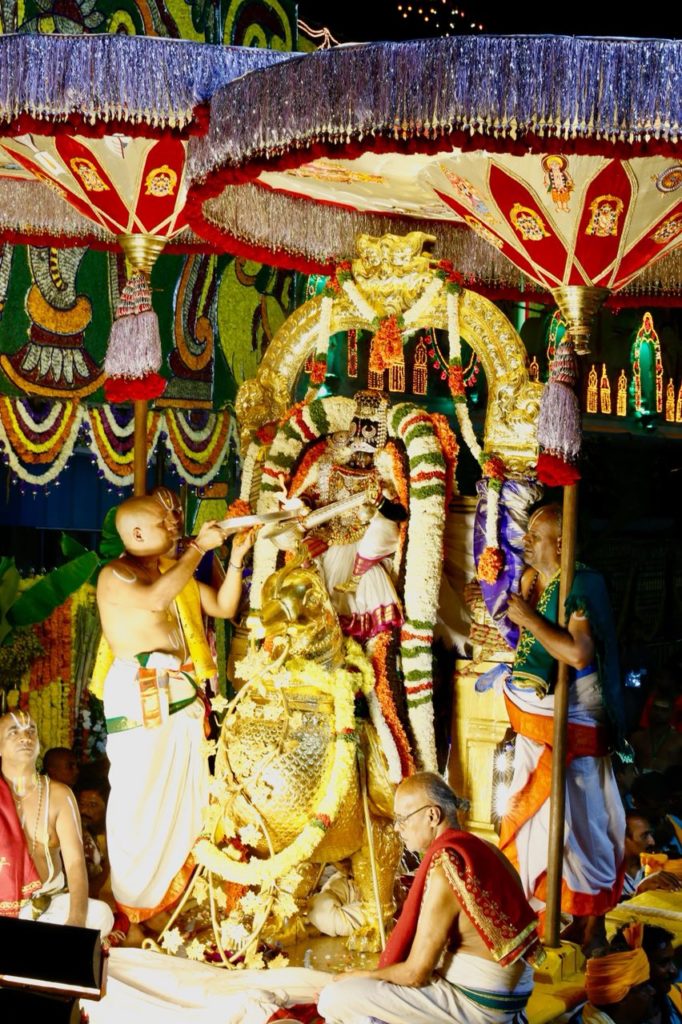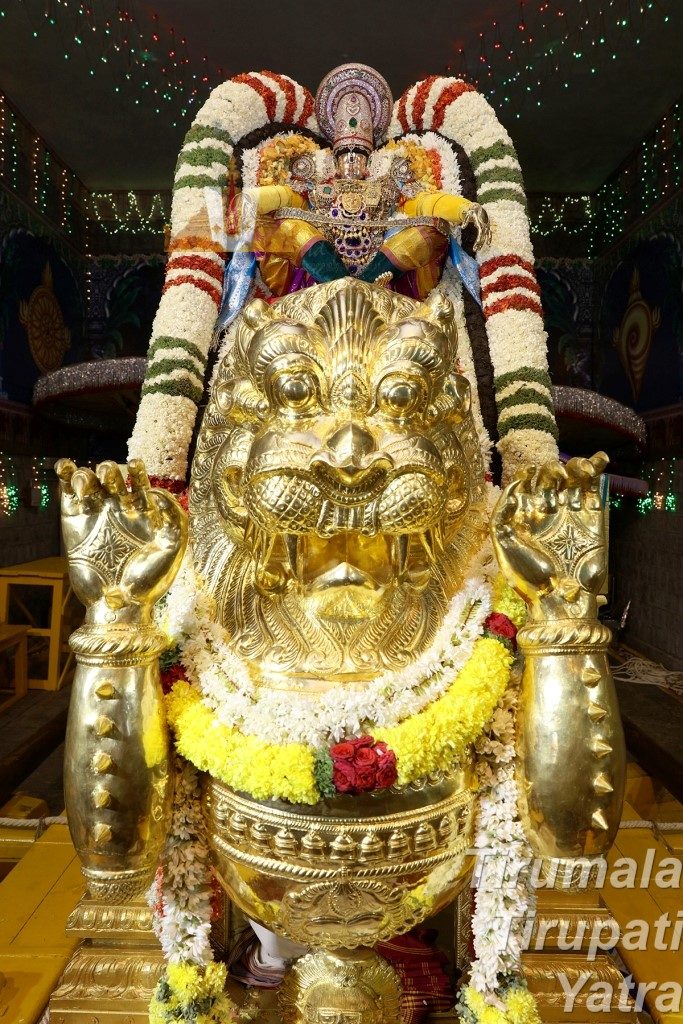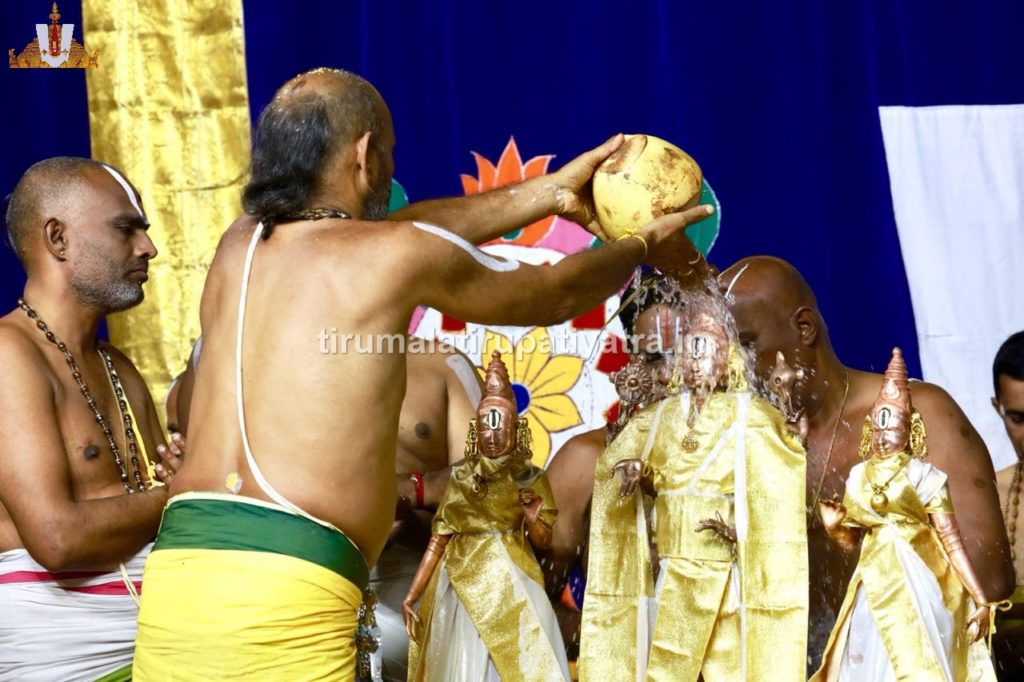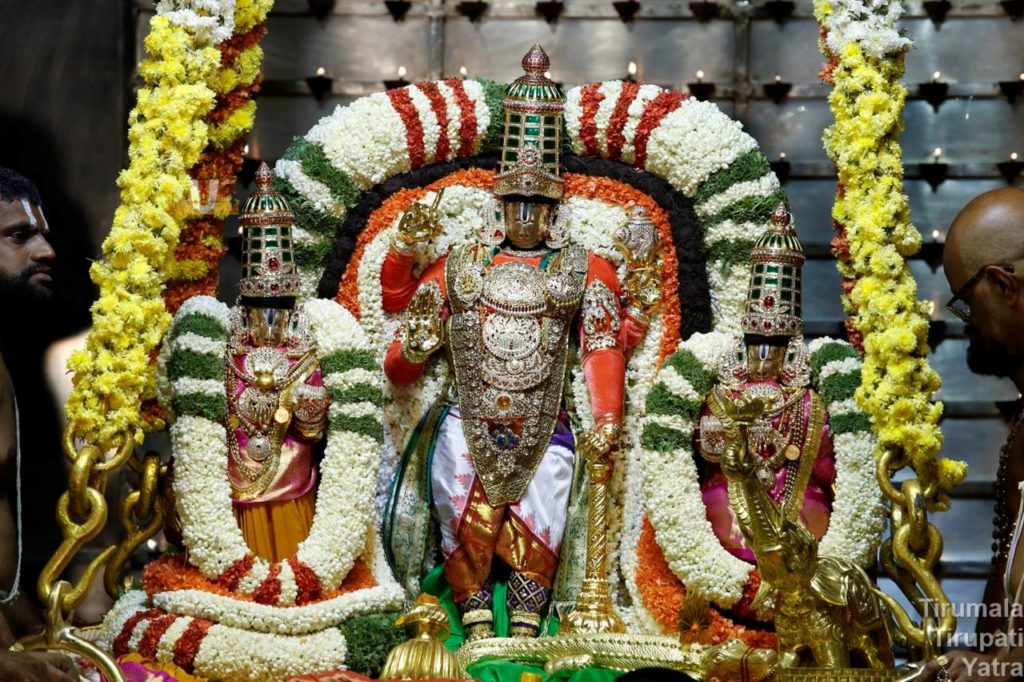Adhyayanotsavam The Lord of Seven Hills is worshipped every moment in the form of one or the other seva or Utsavam (procession). These utsavas provide a blissful experience to the devotees. Around 1000 years ago, the famous Sri Vaishnavaite, Bhagavad Ramanujacharya also visited the divine shrine and made arrangements to assist in the performance of Read More
Tag: Utsavam
The commonly used word, ‘Utsavam’ signifies how our ancestors deeply thought about the welfare of the people. The word ‘Savam’ means Yajna or Kratu. It is for the appeasement of a Supreme Deity, performed per scriptures for the physical and spiritual benefit of the people.
Jyestabhisekam in Tirumala 2023
Jyestabhisekam – Annual Festival A Three-day annual traditional festival ‘Jyestabhisekam’ is being performed in the Tirumala Temple in the month of Jyesta (according to Telugu) month. This special Abhishekam is usually performed every year to protect the Utsava deities of Lord Malayappa swami and His Consorts Sridevi and Bhudevi from damage that might occur while Read More
Jyeshtabhishekam at Tirumala 2022
Jyeshtabhishekam At Tirumala 2022 Jyeshtabhishekam is an annual ritual performed to Sri Malayappa Swami along with Sridevi and Bhudevi at Tirumala in the Jyeshta masam (May / June). The main purpose of this ritual is, to protect the icons/idols with utmost care. Hence, this ritual is conducted. In this ritual, Sri Malayappa Swami along with Read More
Glory of Divine Mother – Tiruchanur
The Glory of the DIVINE MOTHER Sriman Narayana, the Almighty manifests Himself in five distinct forms namely the Param, Vyuham, Vibhavam, Antaryami and Archa. In all these forms the Lord is always inseparably united with His divine consort Sri Mahalakshmi. The Parabrahamam is identified only by the presence of the “Sri”, the Divine Mother. The Read More
Pedda Sesha Vahana Seva 2018
There is one ceremony or the other almost daily for Lord Venkateswara manifest on Tirumala. Different ceremonies are conducted on a grand scale for the Lord with different time frames— daily, fortnightly, monthly and yearly. Of them, special mention may be made of annual Brahmotsavas. Devotees go on raptures witnessing the Lord on different carriages Read More
Chinna Sesha Vahana Seva 2018
There is one ceremony or the other almost daily for Lord Venkateswara manifest on Tirumala. Different ceremonies are conducted on a grand scale for the Lord with different time frames— daily, fortnightly, monthly and yearly. Of them, special mention may be made of annual Brahmotsavas. Devotees go on raptures witnessing the Lord on different carriages Read More
Hamsa Vahana Seva 2018
There is one ceremony or the other almost daily for Lord Venkateswara manifest on Tirumala. Different ceremonies are conducted on a grand scale for the Lord with different time frames— daily, fortnightly, monthly and yearly. Of them, special mention may be made of annual Brahmotsavas. Devotees go on raptures witnessing the Lord on different carriages Read More
Simha Vahana Seva 2018
There is one ceremony or the other almost daily for Lord Venkateswara manifest on Tirumala. Different ceremonies are conducted on a grand scale for the Lord with different time frames— daily, fortnightly, monthly and yearly. Of them, special mention may be made of annual Brahmotsavas. Devotees go on raptures witnessing the Lord on different carriages Read More
Jyestabhishekam 2018
Jyestabhishekam is the Abhisheka ceremony performed to the Lord of Tirumala in the month of Jyesta. This is a three-day ceremony of holy both to Sri Venkateswara which is annually performed to be concluded by the constellation of Jyesta. Abhidheyaka Abhisheka is another name for this ceremony. The word ABHIDHEYA means to protect something from Read More
Arjitha Sevas in Tirumala
Arjitha Sevas / Utsavams The holy place of Tirumala is busy with festivals and processions. The Venkatachala Mahatmyam reveals the sanctity and antiquity of Tirumala in detail. Tirumala is famous for festivals like Daily Kalyanotsavam and Annual Brahmotsavam from the ancient time to the present day as it is said ‘Nithya Kalyanam Paccha Thoranam’. We would like Read More
